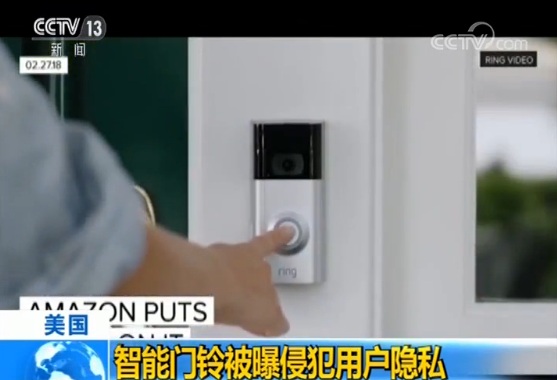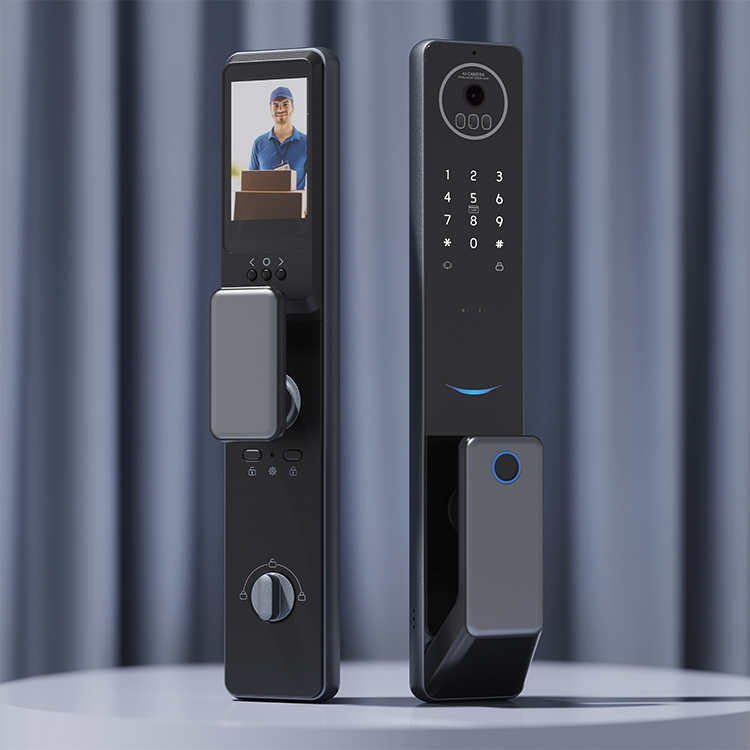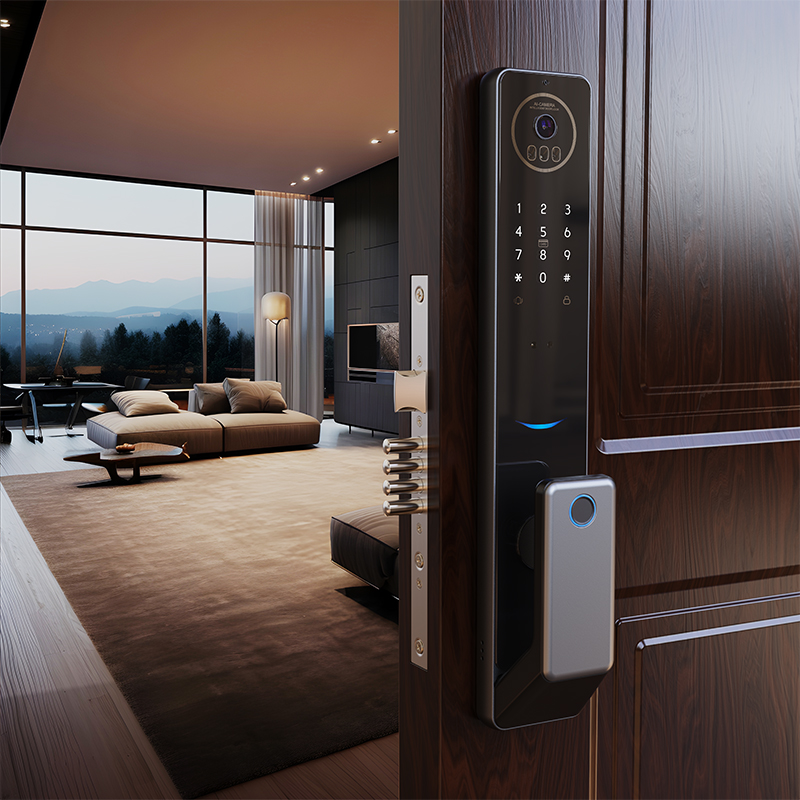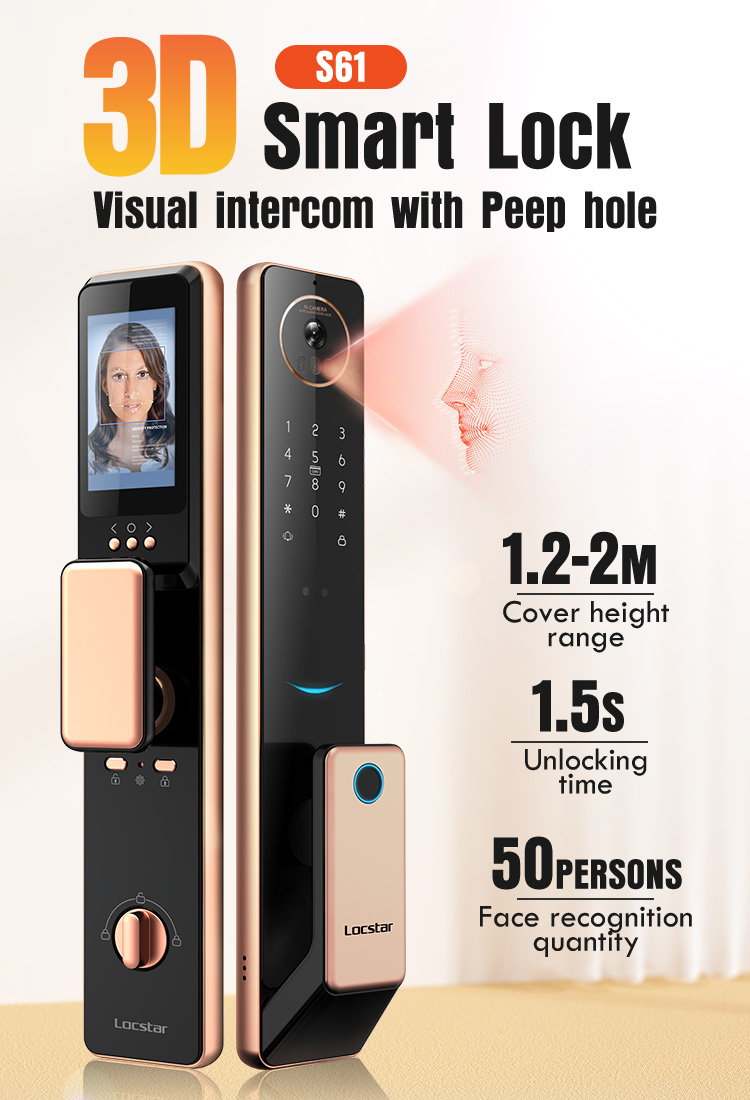The way a smart door lock is installed can have a profound impact on facial recognition angles. Mounting height is a critical consideration; if the lock is positioned too high or too low, it can force users to crane their necks or stoop uncomfortably, leading to suboptimal face positioning. As a general guideline, the lock should be installed at a height that accommodates the average height range of the household members, typically between 1.2 and 1.5 meters from the floor. This ensures that both adults and children can stand naturally in front of the door for effortless recognition.
In addition to height, the tilt angle of the lock also matters. A slight downward tilt can help capture the face more effectively, especially in outdoor settings where sunlight may be streaming from above. However, excessive tilt can distort the facial image, leading to recognition errors. Manufacturers often provide recommended installation angles in their product manuals, which should be meticulously. Some advanced smart locks even come with built-in leveling mechanisms or adjustable mounts to fine-tune the installation angle on-site.
Environmental factors can play havoc with facial recognition accuracy. Harsh sunlight, for instance, can create strong shadows and glare, obscuring facial features and making it difficult for the sensor to detect and recognize the face. In such cases, opting for a lock with an anti-glare coating on the camera lens or a built-in sunshade can mitigate the issue. Similarly, in low-light conditions, such as during the evening or in dimly lit hallways, the performance of the facial recognition system may degrade. Here, locks equipped with infrared illumination or low-light enhancement technology can step in to provide clear facial images, ensuring reliable recognition.
Temperature and humidity are other environmental variables that can't be overlooked. Extreme cold can cause condensation on the lock's surface, fogging up the camera lens and hampering image capture. In regions with high humidity, like coastal areas or during the rainy season, moisture ingress can damage the internal components and disrupt the recognition process. To counter these challenges, some smart locks feature sealed enclosures and moisture-resistant coatings to safeguard against the elements. Additionally, regular maintenance, such as wiping the lock surface with a dry cloth and ensuring proper ventilation around the installation area, can go a long way in maintaining optimal performance.
VI. Strategies for Optimization
A. Hardware Solutions
One of the most straightforward ways to enhance facial recognition angles is through hardware upgrades. Adjustable angle mounts offer users the flexibility to tilt and swivel the lock's camera module, ensuring that it can be aligned perfectly with the face regardless of height or approach angle. This is particularly useful in households with a wide age range, where children and adults may need different optimal angles. For example, a family with young kids can adjust the lock downward to capture their faces easily, while taller members can set it at a more level position for seamless recognition.
Wide-angle cameras are another game-changer. By expanding the field of view, these cameras can capture a larger portion of the face, reducing the chances of a partial or distorted image due to off-angle positioning. Some advanced wide-angle cameras can cover up to 180 degrees horizontally, ensuring that even if a user approaches the door from the side, their face is still within the recognition zone. This is especially beneficial in narrow hallways or crowded entryways where a direct frontal approach may not always be possible.
In addition to cameras, proper illumination is crucial for accurate facial recognition. Installing supplemental lighting, such as infrared LEDs or adjustable ambient lights, can eliminate shadows and provide consistent lighting conditions, regardless of the time of day or ambient light levels. In outdoor settings, where sunlight can create harsh contrasts and shadows, a well-designed sunshade or anti-glare coating on the camera lens can significantly improve recognition accuracy.
B. Software and Algorithm Enhancements
Behind the scenes, software and algorithm improvements play a pivotal role in optimizing facial recognition. Advanced algorithms are designed to analyze and adapt to a wide range of facial angles, compensating for variations in pitch, yaw, and roll. These algorithms use complex mathematical models to map facial features from multiple perspectives, allowing for accurate identification even when the face is presented at an extreme angle. For instance, some smart locks now employ 3D facial mapping techniques that create a detailed three-dimensional model of the face, enabling recognition from virtually any angle.
Machine learning and artificial intelligence are also being harnessed to continuously improve recognition accuracy over time. By analyzing vast amounts of facial data, these systems can learn to distinguish between subtle facial changes caused by aging, weight fluctuations, or even the use of accessories like glasses and hats. They can also adapt to different environmental conditions, such as changes in lighting or background clutter. This self-learning capability ensures that the smart lock becomes more intelligent and accurate with each use, providing a seamless experience for the user.
C. User Training and Guidance
While technology does much of the heavy lifting, user behavior also impacts the success rate of facial recognition. Providing clear instructions and training materials can help users understand how to position themselves optimally in front of the lock. Simple guidelines, such as standing at a natural distance, looking straight at the camera, and avoiding sudden movements, can significantly improve recognition accuracy. For example, a user who habitually tilts their head or looks away from the camera may experience difficulties, but with proper guidance, they can quickly learn the correct posture for seamless unlocking.
Incorporating visual cues and feedback mechanisms into the lock's design can also enhance the user experience. Some smart locks feature LED indicators or audible prompts that guide the user to adjust their position until the face is correctly aligned. This real-time feedback not only speeds up the recognition process but also reduces frustration and the likelihood of failed attempts. Additionally, periodic reminders or tutorials can be sent to users via a mobile app, ensuring that they stay informed about best practices and any new features or optimizations.
VII. Real-world Applications and Success Stories
In the realm of residential security, the impact of optimized facial recognition angles is palpable. Take the case of the Smith family, who upgraded to a state-of-the-art smart door lock with enhanced angle recognition capabilities. Previously, their old lock often failed to recognize their faces when they returned home laden with groceries or while wrangling energetic kids. This led to frustrating delays and the occasional need to fumble for keys. After installing the new lock, with its wide-angle camera and adjustable mount, recognition became seamless. Whether it was the parents arriving home late from work or the kids returning from school, the door swung open effortlessly, enhancing both security and convenience.
In the commercial sector, office buildings have reaped the benefits of improved facial recognition angles. A bustling corporate headquarters in downtown Manhattan replaced its traditional access control system with smart door locks optimized for facial recognition. The adjustable angle mounts and advanced algorithms ensured that employees could enter the building swiftly, even in a rush during peak hours. This not only reduced congestion at entry points but also bolstered security by minimizing the risk of unauthorized access. Additionally, the system integrated with the building's time and attendance software, streamlining payroll management and enhancing overall operational efficiency.
Apartment complexes have also witnessed a transformation. In a large residential community in Singapore, property managers installed smart door locks with facial recognition to enhance tenant security and streamline access management. By optimizing the recognition angles, they eliminated issues related to height differences among residents, ensuring that everyone, from young adults to elderly tenants, could gain entry without hassle. The locks' infrared illumination and anti-glare features proved invaluable in the tropical climate, where sunlight and humidity can be challenging. This led to a significant reduction in complaints about access problems and an increase in tenant satisfaction, while also providing a more secure living environment.
VIII. Future Trends and Innovations

As technology hurtles forward, the future of facial recognition in smart door locks brims with possibilities. One of the most anticipated advancements is the continued evolution of 3D facial recognition. Future systems are likely to offer even higher resolution and more detailed mapping, enabling recognition from virtually any angle with pinpoint accuracy. This will further enhance security and eliminate the remaining vulnerabilities associated with spoofing attempts.
Multimodal biometric fusion is another trend on the horizon. By combining facial recognition with other biometric modalities like fingerprint, iris, or vein recognition, smart locks will be able to provide an unprecedented level of security. For example, a dual-mode system that requires both a face scan and a fingerprint verification for access will make it exponentially more difficult for unauthorized individuals to breach. This multimodal approach will also offer redundancy in case one biometric modality fails due to injury, environmental factors, or technical glitches.
The integration of smart door locks with the broader smart home ecosystem will deepen. Imagine a scenario where your smart lock not only recognizes your face and unlocks the door but also communicates with your home's lighting, thermostat, and security cameras. As you approach the door, the lights could automatically turn on, the thermostat adjust to your preferred temperature, and the security cameras disarm. This seamless interaction between devices will create a truly intelligent and personalized living environment, enhancing both comfort and security.
In conclusion, optimizing facial recognition angles in smart door locks is not a static achievement but an ongoing journey. As technology evolves and user expectations soar, continuous innovation in hardware, software, and design will be essential to stay ahead. By embracing these future trends and innovations, we can look forward to a world where our homes are not only secure fortresses but also hubs of effortless convenience, all unlocked by the power of facial recognition.
IX. Conclusion

In conclusion, optimizing the facial recognition angle in smart door locks is not a luxury but a necessity in today's digital age. It directly impacts the security and convenience that these locks promise. By understanding the factors at play, implementing the right strategies, and learning from successful applications, we can ensure that our smart door locks are truly intelligent and reliable. As consumers, we should demand better angle optimization from manufacturers. And as an industry, continuous innovation in this area will unlock a future where our homes welcome us with open arms, literally, every single time.



